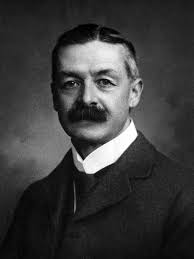Claud Worth
“Before I had electric light I had two paraffin lamps on a table, varying the distance of each lamp and the height of the flame as required.” Light was always an issue for ophthalmologists in the early 1900s and Worth had to be inventive. Electricity clearly made a huge difference when it came along. Claud Worth, in addition to being innovative and possessing an observant and enquiring clinical mind, was clearly an empathetic doctor who was popular with patients, their parents and with students of paediatric ophthalmology. From his obituary in The Br J Ophthalmology in September 1936: “Worth was very successful in handling small children. Quiet and unassuming in manner, his gentleness to his patients endeared him to young and old alike. Children instinctively trusted him”. Children were kept in for a week after surgery: “A young child is kept in bed with both eyes bandaged for the first four days. The sutures are removed before the child leaves the hospital”. Although the general concept of squint surgery (moving muscles to alter ocular alignment) has not changed much since the early 20th century, the technicalities have changed a bit. We are all used to the ease of use Vicryl sutures. Worth had to make his own. “I use the black silk made for sewing boots by W.H.Staynes, Leicester.” The suture is coated with… “a very hot mixture of white beeswax…and white Vaseline”.
CLAUD WORTH – The Mariner
Much of the information for this biopic was obtained from the Obituary of Claud Worth in the British Journal of Ophthalmology, September 1936. Other information was provided by Professor David Taylor from his talk about Claud Worth given at the Children’s Eye Group Meeting before the first Claud Worth Medal lecture in 2004.


